26 May 2023
Support our journey into New Space to guarantee success for all humankind and the planet - Space News Roundup
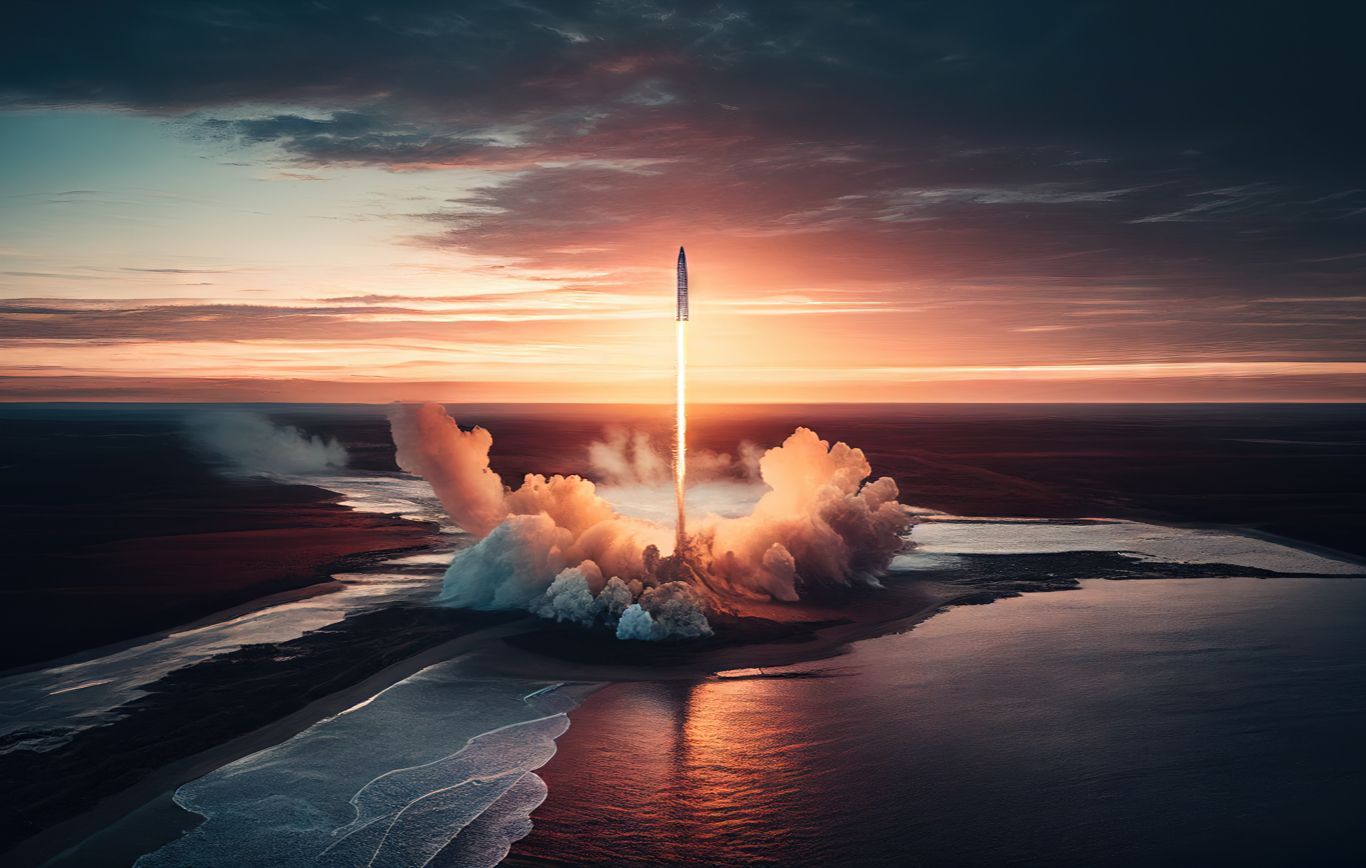
(Image: Adobe)
A year ago we discussed the publication of McKinsey & Co’s report on the role of space in driving sustainability, security and development on Earth. The internationally renowned consultants highlighted the role that space already plays in our daily lives and also outlined a future scenario where the benefits of space continue to enhance our lives on Earth.
In total, the report predicted 4 possible future scenarios for the space sector, depending on the actions we take now; the most preferable being an “accessible, self-sustaining space economy” marked by technological innovation and international collaboration. However, the report also outlined other scenarios where space becomes the success of the elite, where government support stagnates and space becomes cluttered through unregulated activity, or even a future where our potential is unrealised and funding dries up.
This week we have seen continuing signs of growth and commercial success, but also signs that support and national determination may be waning in some areas. As New Space becomes ever-more competitive, it may be vital the governments remain steadfast in their support for their space programmes, in order to achieve success for all humankind and the planet.
New Space exploration has the potential to help us through medical research, clean energy, resource extraction, increased connectivity, in-space manufacturing and Earth observation technologies. Blue Origin owner, Jeff Bezos, firmly believes that whole industries can be moved into space in order to rescue Earth. It may therefore seem reasonable to assume that space exploration maintains a solid public support base. However, this may not be the case.
However, according to a report by Morning Consult in 2021, which asked 2,200 US citizens “to what extent do you think Investing in space research and exploration should be a priority for President Joe Biden and his administration, if at all?”, the majority responded that it was “not too important a priority” (Morning Consult, 2021). This may come as a concerning statistic this week as NASA attempts to gather congressional support for the Artemis programme in the wake of potential spending cuts in the next fiscal year. Last week the agency turned to its crew of Artemis-2 for support and brought them to Washington for meetings with members of Congress. While the crew reported a warm reception, NASA head, Bill Nelson, has recently voiced increasing concerns about potential spending cuts and its impact on the Artemis programme, saying that a potential 22% cut “would have devastating and potentially unrecoverable impacts” on the agency (Space News, 2023).
Furthermore, the industry may also still be faced with environmental concerns, which could in turn could severely effect public support. As we discussed after the launch of Starship in April, environmental groups expressed deep concern about the impact of the launch of the gigantic launch vehicle and this week SpaceX have joined the Federal Aviation Authority (FAA) to fight the environmental lawsuit against them. As well as the obvious concern about any environmental impact, industry leaders should be wary of damage this may cause to the industry as a whole in a time when the public conscious is geared towards addressing issues relating to climate change and sustainability.
Europe and the US may also be concerned about shoring up public support in the face of increasing competition and the beginning of a new space race. ESA continues to face a lack of sovereign launch capabilities and faces the risk of falling behind its competitors. This week Danish astronaut Andreas Mogensen warned that Europe is at risk of falling behind, and said that "I think it certainly would be a big benefit to Europe and the space industry in Europe if we were capable of sending European astronauts into space on a European spacecraft,” (Reuters, 2023).
Meanwhile, China is snapping at the heels of the US in terms of orbital launch numbers, and this week the Indian Space Research Organisation (ISRO) also announced that their Chandrayaan-3 lunar mission is due to launch on July 12th, sending a lander module, a propulsion module and a rover to the lunar surface.
In the wake of these struggles, while facing stiff competition, it will be critical that agencies and governments provide the space sector with the financial support and publicity it needs in order to succeed.
An accessible, self-sustaining space economy or a domain of the few?
In the same week we have also seen proof that national agencies are still capable of delivering results. These are the opportunities that governments have to prove the worth of space and the benefits it can deliver. NASA’s CAPSTONE mission is beginning to deliver visible results and this week provided its first images of the Moon. The perhaps understated mission of the cubesat is to pave the way NASA’s lunar gateway as part of the Artemis project by testing the stability of the lunar orbit.
Details have also been released surrounding NASA’s plan to work with the National Geospatial-Intelligence Agency (NGA) in order to develop a navigation system to guide travellers on the lunar surface, similar to GPS on Earth. The plans, similar to ESA’s Moonlight initiative, will support future civil and military operations and will likely become a critical companies in maintaining and upper-hand in sustaining a lunar presence and exploring the surface for valuable resources.
ESA are also maintaining a presence in asteroid exploration, in the wake of NASA’s highly successful DART asteroid deflection mission last year. Their HERA mission will follow-up DART and observe the impact of the probe. Furthermore, ESA released details of their GRASS (Gravimeter for Small Solar System Objects) meter, which will be the first instrument used to measure gravity on the surface of an asteroid and will be landed on the surface of the Dimorphos asteroid. Understanding more about the behaviour of asteroids could help us better understand future exploration, how to extract resources or even deflect threatening objects from Earth.
National agencies are still leading the way in space and also have the job of ensuring a safe and regulated space economy. However, with the rise of the commercial sector and agencies perhaps facing financial difficulties, it may be the private sector that take the lead.
The UK clearly is reflecting this tone and last week we read the news that it is now second only behind the US for for private space investment. Details have now also been released of the UK Space Agency’s plan for a Space Clusters and Infrastructure Fund, a £50 million kitty which will be used to award UK organisations to develop mission-ready products, ready to sell into the commercial market.
Furthermore, according to report conducted by Space Comm Expo, the UK’s largest commercial space sector expo, 57% of people asked predicted a growth rate of up to 20% in the next 12 months. While public agencies may face hurdles, it seems that the private sector will keep moving forwards.
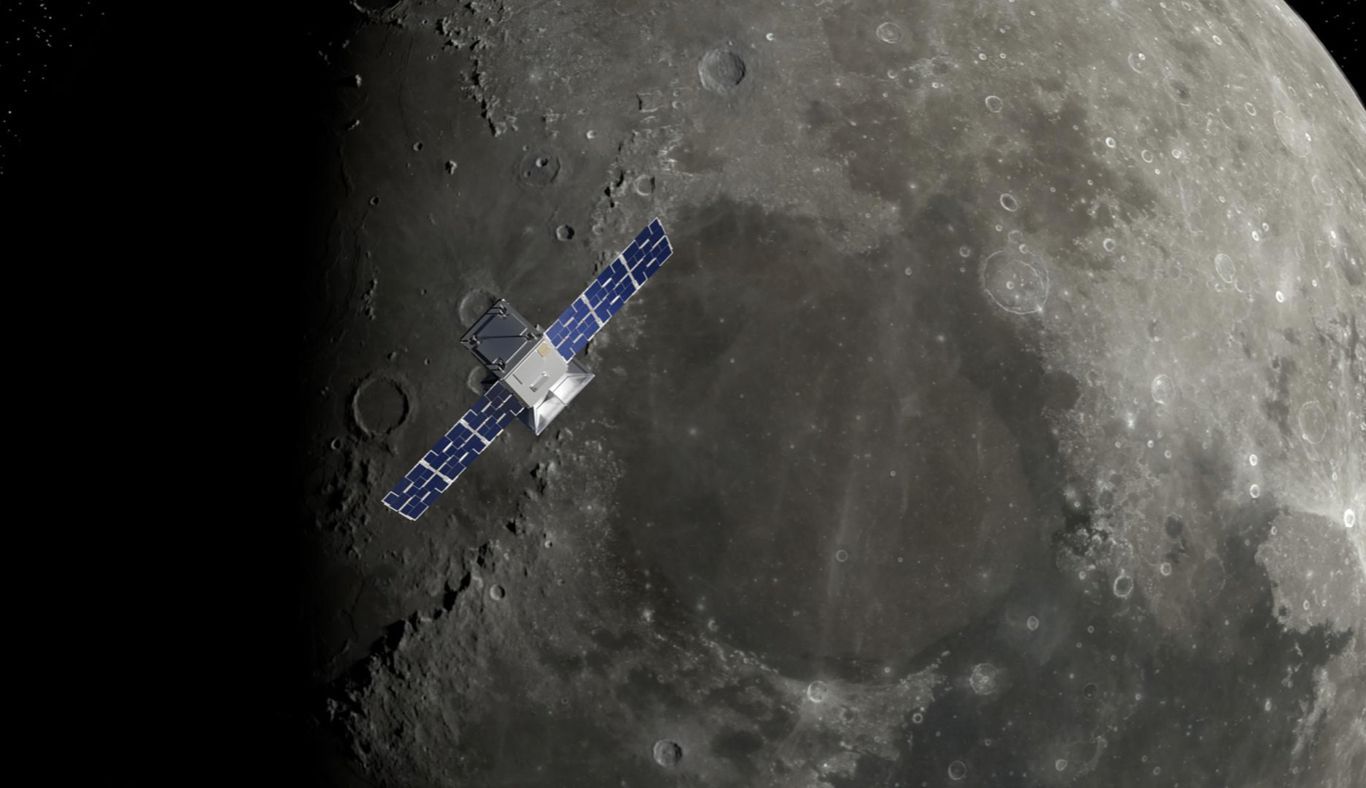
CAPSTONE cubesat has sent images of the Moon (Image: NASA/Daniel J. Rutter)
Private sector will keep moving forwards
Private companies took more big strides into New Space this past week. NASA have chosen their second lunar lander provider, providing an alternative to the Starship lander currently being developed by SpaceX. Blue Origin will be part of a team including Astrobotic and Lockheed Martin chosen to develop the commercial “Blue Moon” lander, to be used as part of Artemis-5.
The private sector are also attempting to spearhead Martian exploration. US companies Impulse Space and Relativity Space have released more details about their Mars lander mission, initially planned for late 2024. The mission is now planned for 2026 using a redesigned version of Relativity’s 3D printed Terran-R rocket. Adding further details, Josh Brost, senior vice president of revenue operations at Relativity, described that they are committed to a series of such missions, establishing a “constant supply chain to Mars.”
Launch startups also continue to have a strong grip on the launch market. Sierra Space have announced more details of their reusable Dream Chaser spaceplane, which will be used to deliver cargo to the ISS and expects its first flight to now be mid-August this year. Also, Spanish startup PLD Space are on the cusp of launching their Miura-1 rocket in what will be Europe’s first privately manufactured reusable rocket. Miura can carry up to 100kg and is designed to be reused for up to 3 launches. Virgin Galactic have also successfully completed the first flight of their SpaceShip Two in two years, in preparation for commercial flights beginning in June.
These triumphs and innovations must be celebrated in order to create support for the long-term shared success of the space sector, for it does have to potential to enhance our lives on Earth. On May 20th, OneWeb’s JoeySat was successfully launched from California. The innovative satellite is able to “beam-hop”, allowing it to switch satellite capacity between different places on Earth up to a 1,000 times per second, improve broadband connectivity from space and “improve peoples’ lives through connectivity” according to UK Space Agency CEO Dr Paul Bate.
Additionally, it has been revealed that US-based Axiom Space’s latest ISS mission will feature experiments on human stem cell ageing, inflammation and cancer in the microgravity of space. This research will look into the health and well-being of astronauts, but could also potentially advance research into life-saving cancer treatments on Earth. Space exploration is and has been improving life on Earth and it is vital that this information is relayed to the public. Without universal support, the benefits of space may never be fully realised.
External Links
This Week
*News articles posted here are not property of ANASDA GmbH and belong to their respected owners. Postings here are external links only.
Our future in space
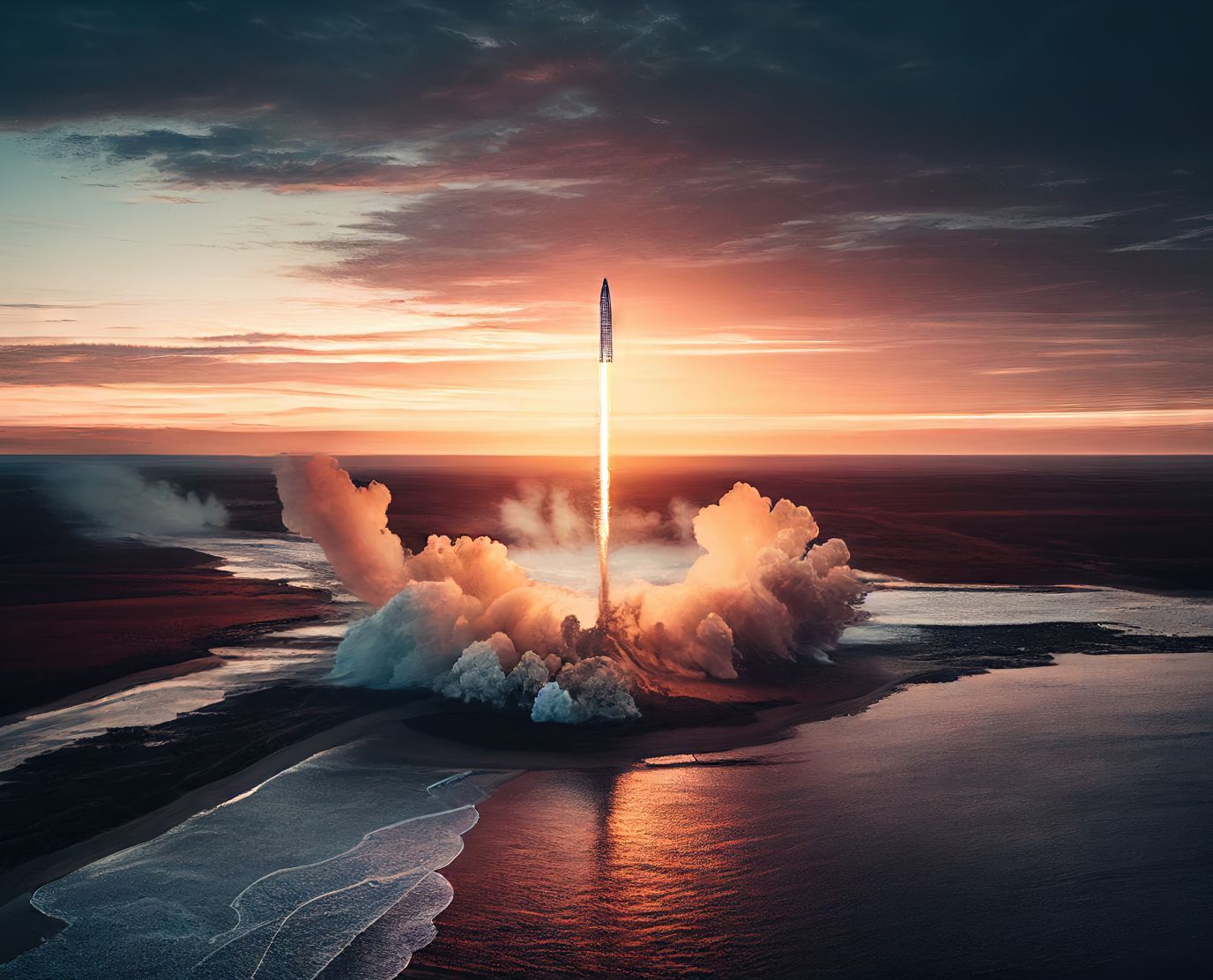
(Image: Adobe)
26 May 2023
Support our journey into New Space to guarantee success for all humankind and the planet - Space News Roundup
A year ago we discussed the publication of McKinsey & Co’s
report on the role of space in driving sustainability, security and development on Earth. The internationally renowned consultants highlighted the role that space already plays in our daily lives and also outlined a future scenario where the benefits of space continue to enhance our lives on Earth.
In total, the report predicted 4 possible future scenarios for the space sector, depending on the actions we take now; the most preferable being an “accessible, self-sustaining space economy” marked by technological innovation and international collaboration. However, the report also outlined other scenarios where space becomes the success of the elite, where government support stagnates and space becomes cluttered through unregulated activity, or even a future where our potential is unrealised and funding dries up.
This week we have seen continuing signs of growth and commercial success, but also signs that support and national determination may be waning in some areas. As New Space becomes ever-more competitive, it may be vital the governments remain steadfast in their support for their space programmes, in order to achieve success for all humankind and the planet.
New Space exploration has the potential to help us through medical research, clean energy, resource extraction, increased connectivity, in-space manufacturing and Earth observation technologies. Blue Origin owner, Jeff Bezos, firmly believes that whole industries can be moved into space in order to rescue Earth. It may therefore seem reasonable to assume that space exploration maintains a solid public support base. However, this may not be the case.
However, according to a report by Morning Consult in 2021, which asked 2,200 US citizens “to what extent do you think Investing in space research and exploration should be a priority for President Joe Biden and his administration, if at all?”, the majority responded that it was “not too important a priority” (Morning Consult, 2021). This may come as a concerning statistic this week as NASA attempts to gather congressional support for the Artemis programme in the wake of potential spending cuts in the next fiscal year. Last week the agency turned to its crew of Artemis-2 for support and brought them to Washington for meetings with members of Congress. While the crew reported a warm reception, NASA head, Bill Nelson, has recently voiced increasing concerns about potential spending cuts and its impact on the Artemis programme, saying that a potential 22% cut “would have devastating and potentially unrecoverable impacts” on the agency (Space News, 2023).
Furthermore, the industry may also still be faced with environmental concerns, which could in turn could severely effect public support. As we discussed after the launch of Starship in April, environmental groups expressed deep concern about the impact of the launch of the gigantic launch vehicle and this week SpaceX have joined the Federal Aviation Authority (FAA) to fight the environmental lawsuit against them. As well as the obvious concern about any environmental impact, industry leaders should be wary of damage this may cause to the industry as a whole in a time when the public conscious is geared towards addressing issues relating to climate change and sustainability.
Europe and the US may also be concerned about shoring up public support in the face of increasing competition and the beginning of a new space race. ESA continues to face a lack of sovereign launch capabilities and faces the risk of falling behind its competitors. This week Danish astronaut Andreas Mogensen warned that Europe is at risk of falling behind, and said that "I think it certainly would be a big benefit to Europe and the space industry in Europe if we were capable of sending European astronauts into space on a European spacecraft,” (Reuters, 2023).
Meanwhile, China is snapping at the heels of the US in terms of orbital launch numbers, and this week the Indian Space Research Organisation (ISRO) also announced that their Chandrayaan-3 lunar mission is due to launch on July 12th, sending a lander module, a propulsion module and a rover to the lunar surface.
In the wake of these struggles, while facing stiff competition, it will be critical that agencies and governments provide the space sector with the financial support and publicity it needs in order to succeed.
An accessible, self-sustaining space economy or a domain of the few?
In the same week we have also seen proof that national agencies are still capable of delivering results. These are the opportunities that governments have to prove the worth of space and the benefits it can deliver. NASA’s CAPSTONE mission is beginning to deliver visible results and this week provided its first images of the Moon. The perhaps understated mission of the cubesat is to pave the way NASA’s lunar gateway as part of the Artemis project by testing the stability of the lunar orbit.
Details have also been released surrounding NASA’s plan to work with the National Geospatial-Intelligence Agency (NGA) in order to develop a navigation system to guide travellers on the lunar surface, similar to GPS on Earth. The plans, similar to ESA’s Moonlight initiative, will support future civil and military operations and will likely become a critical companies in maintaining and upper-hand in sustaining a lunar presence and exploring the surface for valuable resources.
ESA are also maintaining a presence in asteroid exploration, in the wake of NASA’s highly successful DART asteroid deflection mission last year. Their HERA mission will follow-up DART and observe the impact of the probe. Furthermore, ESA released details of their GRASS (Gravimeter for Small Solar System Objects) meter, which will be the first instrument used to measure gravity on the surface of an asteroid and will be landed on the surface of the Dimorphos asteroid. Understanding more about the behaviour of asteroids could help us better understand future exploration, how to extract resources or even deflect threatening objects from Earth.
National agencies are still leading the way in space and also have the job of ensuring a safe and regulated space economy. However, with the rise of the commercial sector and agencies perhaps facing financial difficulties, it may be the private sector that take the lead.
The UK clearly is reflecting this tone and last week we read the news that it is now second only behind the US for for private space investment. Details have now also been released of the UK Space Agency’s plan for a Space Clusters and Infrastructure Fund, a £50 million kitty which will be used to award UK organisations to develop mission-ready products, ready to sell into the commercial market.
Furthermore, according to report conducted by Space Comm Expo, the UK’s largest commercial space sector expo, 57% of people asked predicted a growth rate of up to 20% in the next 12 months. While public agencies may face hurdles, it seems that the private sector will keep moving forwards.
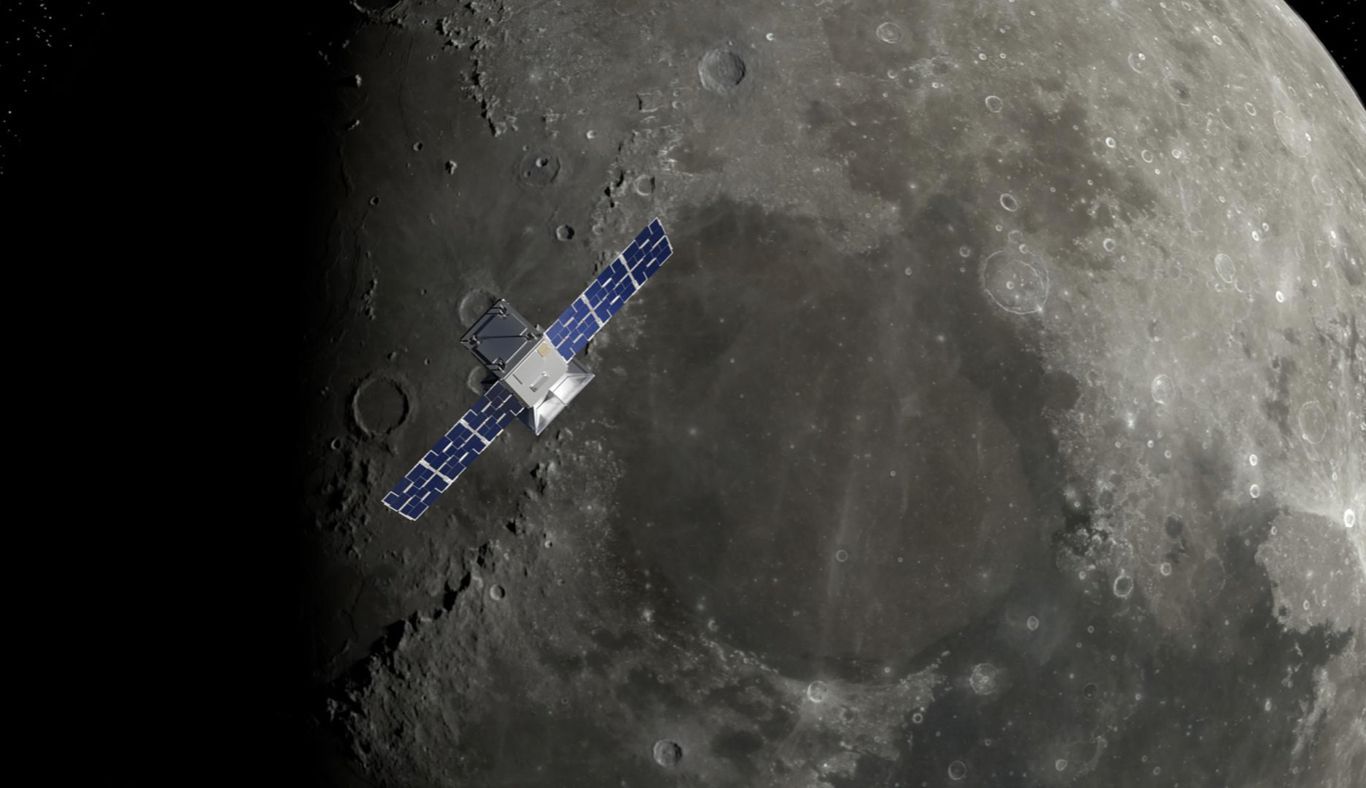
CAPSTONE cubesat has sent images of the Moon (Image: NASA/Daniel J. Rutter)
Private sector will keep moving forwards
Private companies took more big strides into New Space this past week. NASA have chosen their second lunar lander provider, providing an alternative to the Starship lander currently being developed by SpaceX. Blue Origin will be part of a team including Astrobotic and Lockheed Martin chosen to develop the commercial “Blue Moon” lander, to be used as part of Artemis-5.
The private sector are also attempting to spearhead Martian exploration. US companies Impulse Space and Relativity Space have released more details about their Mars lander mission, initially planned for late 2024. The mission is now planned for 2026 using a redesigned version of Relativity’s 3D printed Terran-R rocket. Adding further details, Josh Brost, senior vice president of revenue operations at Relativity, described that they are committed to a series of such missions, establishing a “constant supply chain to Mars.”
Launch startups also continue to have a strong grip on the launch market. Sierra Space have announced more details of their reusable Dream Chaser spaceplane, which will be used to deliver cargo to the ISS and expects its first flight to now be mid-August this year. Also, Spanish startup PLD Space are on the cusp of launching their Miura-1 rocket in what will be Europe’s first privately manufactured reusable rocket. Miura can carry up to 100kg and is designed to be reused for up to 3 launches. Virgin Galactic have also successfully completed the first flight of their SpaceShip Two in two years, in preparation for commercial flights beginning in June.
These triumphs and innovations must be celebrated in order to create support for the long-term shared success of the space sector, for it does have to potential to enhance our lives on Earth. On May 20th, OneWeb’s JoeySat was successfully launched from California. The innovative satellite is able to “beam-hop”, allowing it to switch satellite capacity between different places on Earth up to a 1,000 times per second, improve broadband connectivity from space and “improve peoples’ lives through connectivity” according to UK Space Agency CEO Dr Paul Bate.
Additionally, it has been revealed that US-based Axiom Space’s latest ISS mission will feature experiments on human stem cell ageing, inflammation and cancer in the microgravity of space. This research will look into the health and well-being of astronauts, but could also potentially advance research into life-saving cancer treatments on Earth. Space exploration is and has been improving life on Earth and it is vital that this information is relayed to the public. Without universal support, the benefits of space may never be fully realised.
Share this article
External Links
This Week
*News articles posted here are not property of ANASDA GmbH and belong to their respected owners. Postings here are external links only.
26 May 2023
Support our journey into New Space to guarantee success for all humankind and the planet - Space News Roundup
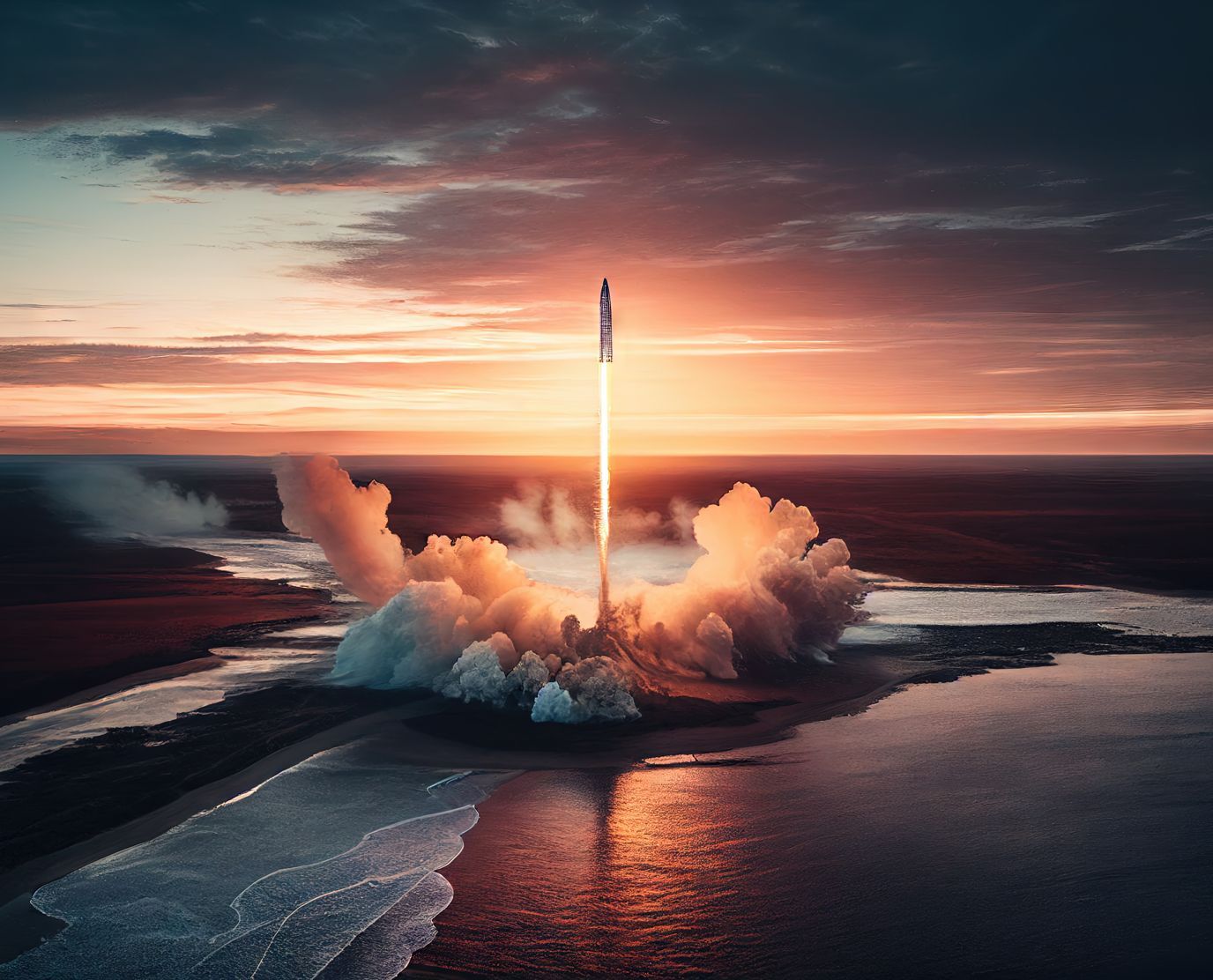
(Image:Adobe)
A year ago we discussed the publication of McKinsey & Co’s report on the role of space in driving sustainability, security and development on Earth. The internationally renowned consultants highlighted the role that space already plays in our daily lives and also outlined a future scenario where the benefits of space continue to enhance our lives on Earth.
In total, the report predicted 4 possible future scenarios for the space sector, depending on the actions we take now; the most preferable being an “accessible, self-sustaining space economy” marked by technological innovation and international collaboration. However, the report also outlined other scenarios where space becomes the success of the elite, where government support stagnates and space becomes cluttered through unregulated activity, or even a future where our potential is unrealised and funding dries up.
This week we have seen continuing signs of growth and commercial success, but also signs that support and national determination may be waning in some areas. As New Space becomes ever-more competitive, it may be vital the governments remain steadfast in their support for their space programmes, in order to achieve success for all humankind and the planet.
New Space exploration has the potential to help us through medical research, clean energy, resource extraction, increased connectivity, in-space manufacturing and Earth observation technologies. Blue Origin owner, Jeff Bezos, firmly believes that whole industries can be moved into space in order to rescue Earth. It may therefore seem reasonable to assume that space exploration maintains a solid public support base. However, this may not be the case.
However, according to a report by Morning Consult in 2021, which asked 2,200 US citizens “to what extent do you think Investing in space research and exploration should be a priority for President Joe Biden and his administration, if at all?”, the majority responded that it was “not too important a priority” (Morning Consult, 2021). This may come as a concerning statistic this week as NASA attempts to gather congressional support for the Artemis programme in the wake of potential spending cuts in the next fiscal year. Last week the agency turned to its crew of Artemis-2 for support and brought them to Washington for meetings with members of Congress. While the crew reported a warm reception, NASA head, Bill Nelson, has recently voiced increasing concerns about potential spending cuts and its impact on the Artemis programme, saying that a potential 22% cut “would have devastating and potentially unrecoverable impacts” on the agency (Space News, 2023).
Furthermore, the industry may also still be faced with environmental concerns, which could in turn could severely effect public support. As we discussed after the launch of Starship in April, environmental groups expressed deep concern about the impact of the launch of the gigantic launch vehicle and this week SpaceX have joined the Federal Aviation Authority (FAA) to fight the environmental lawsuit against them. As well as the obvious concern about any environmental impact, industry leaders should be wary of damage this may cause to the industry as a whole in a time when the public conscious is geared towards addressing issues relating to climate change and sustainability.
Europe and the US may also be concerned about shoring up public support in the face of increasing competition and the beginning of a new space race. ESA continues to face a lack of sovereign launch capabilities and faces the risk of falling behind its competitors. This week Danish astronaut Andreas Mogensen warned that Europe is at risk of falling behind, and said that "I think it certainly would be a big benefit to Europe and the space industry in Europe if we were capable of sending European astronauts into space on a European spacecraft,” (Reuters, 2023).
Meanwhile, China is snapping at the heels of the US in terms of orbital launch numbers, and this week the Indian Space Research Organisation (ISRO) also announced that their Chandrayaan-3 lunar mission is due to launch on July 12th, sending a lander module, a propulsion module and a rover to the lunar surface.
In the wake of these struggles, while facing stiff competition, it will be critical that agencies and governments provide the space sector with the financial support and publicity it needs in order to succeed.
An accessible, self-sustaining space economy or a domain of the few?
In the same week we have also seen proof that national agencies are still capable of delivering results. These are the opportunities that governments have to prove the worth of space and the benefits it can deliver. NASA’s CAPSTONE mission is beginning to deliver visible results and this week provided its first images of the Moon. The perhaps understated mission of the cubesat is to pave the way NASA’s lunar gateway as part of the Artemis project by testing the stability of the lunar orbit.
Details have also been released surrounding NASA’s plan to work with the National Geospatial-Intelligence Agency (NGA) in order to develop a navigation system to guide travellers on the lunar surface, similar to GPS on Earth. The plans, similar to ESA’s Moonlight initiative, will support future civil and military operations and will likely become a critical companies in maintaining and upper-hand in sustaining a lunar presence and exploring the surface for valuable resources.
ESA are also maintaining a presence in asteroid exploration, in the wake of NASA’s highly successful DART asteroid deflection mission last year. Their HERA mission will follow-up DART and observe the impact of the probe. Furthermore, ESA released details of their GRASS (Gravimeter for Small Solar System Objects) meter, which will be the first instrument used to measure gravity on the surface of an asteroid and will be landed on the surface of the Dimorphos asteroid. Understanding more about the behaviour of asteroids could help us better understand future exploration, how to extract resources or even deflect threatening objects from Earth.
National agencies are still leading the way in space and also have the job of ensuring a safe and regulated space economy. However, with the rise of the commercial sector and agencies perhaps facing financial difficulties, it may be the private sector that take the lead.
The UK clearly is reflecting this tone and last week we read the news that it is now second only behind the US for for private space investment. Details have now also been released of the UK Space Agency’s plan for a Space Clusters and Infrastructure Fund, a £50 million kitty which will be used to award UK organisations to develop mission-ready products, ready to sell into the commercial market.
Furthermore, according to report conducted by Space Comm Expo, the UK’s largest commercial space sector expo, 57% of people asked predicted a growth rate of up to 20% in the next 12 months. While public agencies may face hurdles, it seems that the private sector will keep moving forwards.
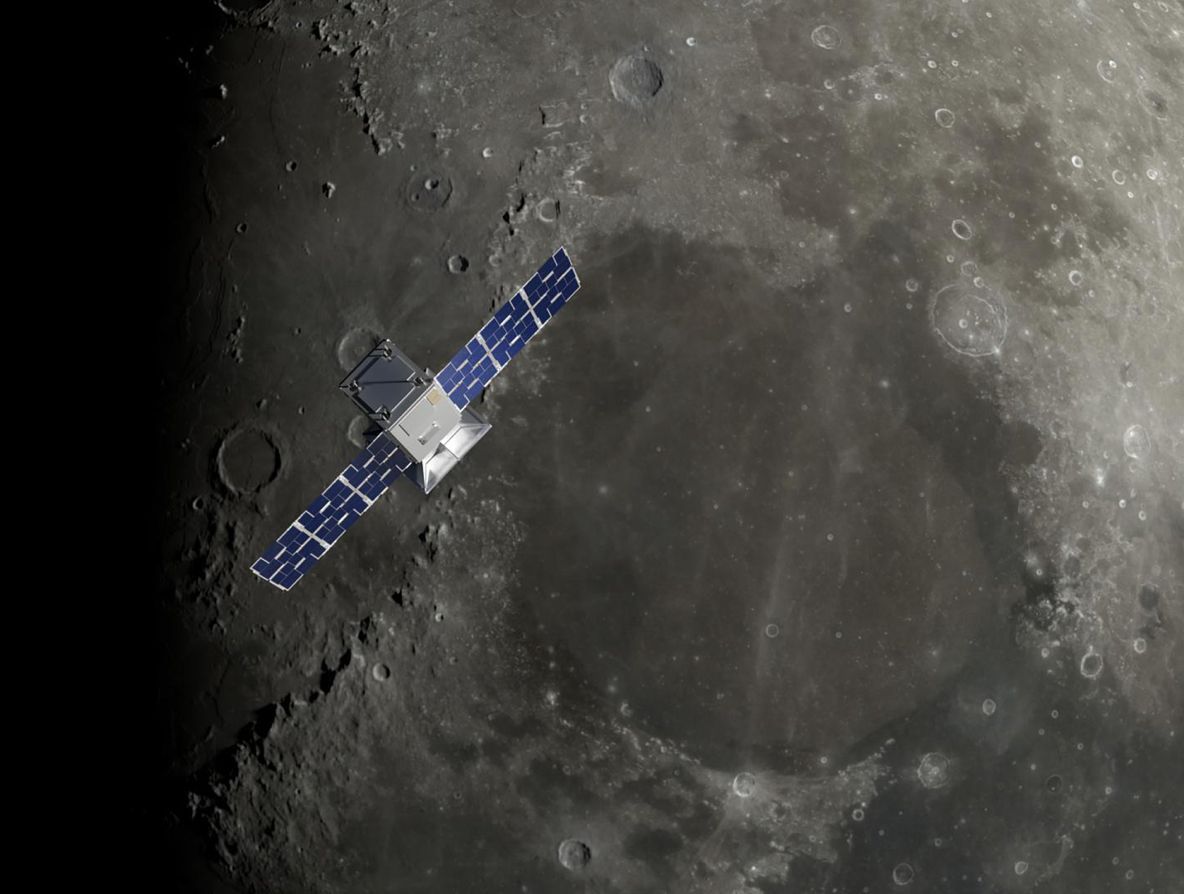
CAPSTONE cubesat has sent images of the Moon (Image: NASA/Daniel J. Rutter)
Private sector will keep moving forwards
Private companies took more big strides into New Space this past week. NASA have chosen their second lunar lander provider, providing an alternative to the Starship lander currently being developed by SpaceX. Blue Origin will be part of a team including Astrobotic and Lockheed Martin chosen to develop the commercial “Blue Moon” lander, to be used as part of Artemis-5.
The private sector are also attempting to spearhead Martian exploration. US companies Impulse Space and Relativity Space have released more details about their Mars lander mission, initially planned for late 2024. The mission is now planned for 2026 using a redesigned version of Relativity’s 3D printed Terran-R rocket. Adding further details, Josh Brost, senior vice president of revenue operations at Relativity, described that they are committed to a series of such missions, establishing a “constant supply chain to Mars.”
Launch startups also continue to have a strong grip on the launch market. Sierra Space have announced more details of their reusable Dream Chaser spaceplane, which will be used to deliver cargo to the ISS and expects its first flight to now be mid-August this year. Also, Spanish startup PLD Space are on the cusp of launching their Miura-1 rocket in what will be Europe’s first privately manufactured reusable rocket. Miura can carry up to 100kg and is designed to be reused for up to 3 launches. Virgin Galactic have also successfully completed the first flight of their SpaceShip Two in two years, in preparation for commercial flights beginning in June.
These triumphs and innovations must be celebrated in order to create support for the long-term shared success of the space sector, for it does have to potential to enhance our lives on Earth. On May 20th, OneWeb’s JoeySat was successfully launched from California. The innovative satellite is able to “beam-hop”, allowing it to switch satellite capacity between different places on Earth up to a 1,000 times per second, improve broadband connectivity from space and “improve peoples’ lives through connectivity” according to UK Space Agency CEO Dr Paul Bate.
Additionally, it has been revealed that US-based Axiom Space’s latest ISS mission will feature experiments on human stem cell ageing, inflammation and cancer in the microgravity of space. This research will look into the health and well-being of astronauts, but could also potentially advance research into life-saving cancer treatments on Earth. Space exploration is and has been improving life on Earth and it is vital that this information is relayed to the public. Without universal support, the benefits of space may never be fully realised.
Share this article
External Links
This Week
*News articles posted here are not property of ANASDA GmbH and belong to their respected owners. Postings here are external links only.


















